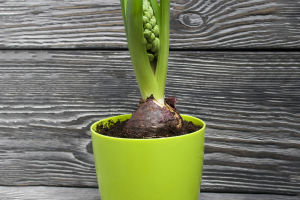Mushrooms, while commonly used in various culinary dishes, are often misunderstood in terms of their classification and characteristics.
Contrary to popular belief, mushrooms do not belong to the plant kingdom. So, what exactly are mushrooms, and how do they differ from other organisms?
Mushrooms fall under the kingdom Fungi, a distinct group of organisms separate from animals, plants, bacteria, and viruses. This classification is significant as it highlights the unique biological characteristics and evolutionary history of mushrooms.
First and foremost, mushrooms exhibit a heterotrophic mode of nutrition, meaning they cannot photosynthesize to produce their own organic nutrients. Unlike plants, which rely on chloroplasts and photosynthesis for energy production, mushrooms obtain their nutrition from external sources. This reliance on external nutrients is a defining feature of fungi and sets them apart from plants.
Mushrooms differ from bacteria in terms of size and cellular structure. Bacterial cells are extremely small, typically ranging from a fraction of a micron to a few microns in size. In contrast, fungal cells are considerably larger, often 5 to 10 times larger than bacterial cells.
Fungal cells contain a nucleus, a vital component responsible for genetic information storage and cellular function. This distinction in size and cellular structure underscores the evolutionary divergence between fungi and bacteria.
Another distinguishing characteristic of fungi, including mushrooms, is their ability to form complex structures known as mycelium. Mycelium consists of interconnected filaments called hyphae, which extend and branch outwards to form a network of fungal threads.
This network enables fungi to efficiently absorb nutrients from their surroundings and explore new habitats. Most fungi, including mushrooms, are capable of forming mycelium, a feature rarely observed in bacteria.
Fungi have the remarkable ability to combine multiple hyphae to create larger structures, such as the mushrooms we commonly encounter. These mushrooms serve as reproductive structures for fungi, producing spores that are dispersed to colonize new habitats. This reproductive strategy ensures the survival and dispersal of fungal populations in diverse environments.
Despite their unique characteristics, mushrooms share more similarities with animal cells than with plant cells. Unlike plants, fungal cells lack plastids, such as chloroplasts, which are essential for photosynthesis. Instead, fungal cells exhibit similarities with animal cells in terms of cellular structure and function.
Mushrooms belong to the kingdom Fungi, a distinct group of organisms separate from plants, animals, bacteria, and viruses.
Their classification and characteristics highlight their unique biological attributes, including heterotrophic nutrition, cellular structure, and reproductive strategies. Understanding the classification and traits of mushrooms provides valuable insights into the diversity and complexity of the natural world.
As stewards of the environment, it is essential to appreciate and conserve the biodiversity of fungi, including the enigmatic and fascinating mushrooms.
As decomposers, mushrooms break down organic matter, recycling nutrients and contributing to soil fertility. Additionally, many mushrooms form symbiotic relationships with plants, such as mycorrhizal associations, where fungal hyphae intertwine with plant roots, facilitating nutrient exchange and enhancing plant growth.
These symbiotic interactions highlight the interconnectedness of organisms in ecosystems and underscore the importance of mushrooms in maintaining ecological balance. Moreover, mushrooms have significant cultural and economic value, serving as food sources, medicinal remedies, and artistic inspirations for countless societies throughout history.


